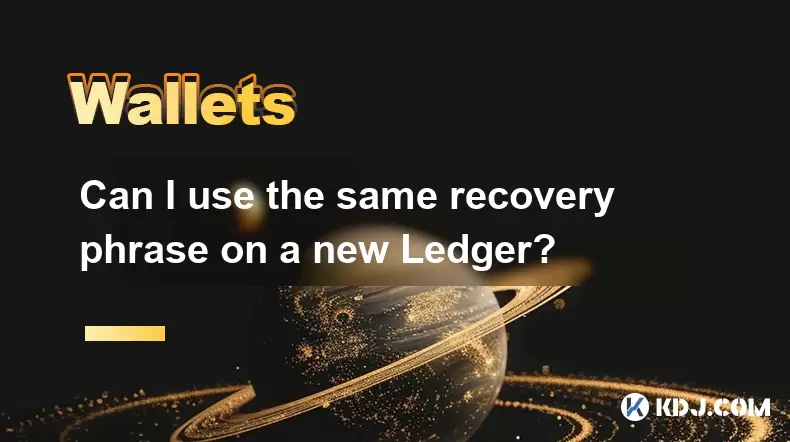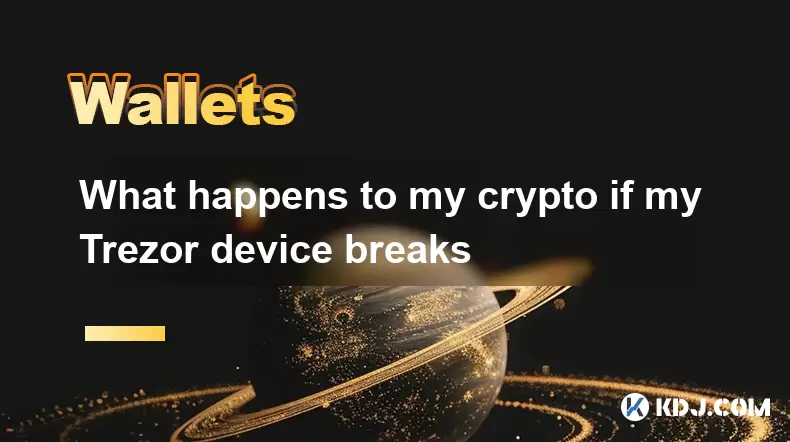-
 Bitcoin
Bitcoin $116,338.7874
-3.17% -
 Ethereum
Ethereum $3,017.0348
-0.35% -
 XRP
XRP $2.8779
-3.61% -
 Tether USDt
Tether USDt $0.9997
-0.01% -
 BNB
BNB $681.1328
-1.94% -
 Solana
Solana $159.4896
-3.25% -
 USDC
USDC $0.9998
-0.01% -
 Dogecoin
Dogecoin $0.1914
-4.87% -
 TRON
TRON $0.2981
-0.94% -
 Cardano
Cardano $0.7215
-2.32% -
 Hyperliquid
Hyperliquid $47.3384
-1.00% -
 Stellar
Stellar $0.4467
-2.96% -
 Sui
Sui $3.9201
0.68% -
 Chainlink
Chainlink $15.4254
-4.13% -
 Hedera
Hedera $0.2320
-3.81% -
 Bitcoin Cash
Bitcoin Cash $485.9139
-4.02% -
 Avalanche
Avalanche $21.0099
-2.86% -
 UNUS SED LEO
UNUS SED LEO $9.0031
0.00% -
 Shiba Inu
Shiba Inu $0.0...01309
-2.84% -
 Toncoin
Toncoin $2.9971
-0.82% -
 Litecoin
Litecoin $92.8919
-3.39% -
 Polkadot
Polkadot $3.9101
-3.17% -
 Monero
Monero $333.5849
-3.30% -
 Uniswap
Uniswap $9.0860
-2.64% -
 Dai
Dai $0.9999
0.01% -
 Ethena USDe
Ethena USDe $1.0004
0.01% -
 Bitget Token
Bitget Token $4.4728
1.07% -
 Pepe
Pepe $0.0...01223
-0.87% -
 Aave
Aave $319.8257
-0.39% -
 Bittensor
Bittensor $427.1075
3.79%
Can I use the same recovery phrase on a new Ledger?
Yes, you can use the same recovery phrase on a new Ledger device to restore your wallet and access your funds.
Jul 13, 2025 at 01:15 am

Understanding Recovery Phrases and Their Role in Crypto Security
A recovery phrase, often referred to as a seed phrase, is a sequence of 12 or 24 words generated by your cryptocurrency wallet during setup. This phrase acts as the master key to your wallet, allowing you to restore access to your funds if you lose or damage your device. It is crucial to understand that this recovery phrase is not tied to any specific hardware wallet brand or model but rather to the wallet's underlying cryptographic structure.
When you set up a Ledger device, it generates a recovery phrase using the BIP-39 standard. This standard ensures compatibility across many wallets and platforms. Therefore, yes, you can use the same recovery phrase on a new Ledger device to regain access to your crypto assets.
Steps to Restore Your Wallet Using the Same Recovery Phrase
If you're replacing an old Ledger with a new one, restoring your wallet involves a few precise steps:
- Ensure that your new Ledger device is factory reset before beginning the restoration process.
- During setup, choose the option to restore from a backup instead of creating a new wallet.
- Carefully enter each word of your existing recovery phrase when prompted, making sure the order is accurate.
- Confirm that the passphrase (if used) matches the one originally set up with the old device.
- Wait for the device to sync and verify the recovery phrase before proceeding.
Following these steps ensures that your new Ledger will mirror the wallet structure of the previous one, granting access to all associated cryptocurrencies.
Compatibility Across Different Ledger Models
Ledger offers several models such as the Nano S, Nano X, and Nano S Plus. Despite differences in features like Bluetooth connectivity or screen size, all Ledger devices use the same core wallet infrastructure. This means that a recovery phrase generated on a Nano S can be safely and securely used on a Nano X or any other supported Ledger model.
It’s important to note that while the recovery phrase remains compatible, certain advanced settings or account configurations may not automatically carry over. Users should manually check their accounts and ensure that all necessary public addresses are correctly derived after restoration.
Security Considerations When Reusing a Recovery Phrase
Reusing a recovery phrase on a new device doesn’t inherently compromise security, provided certain precautions are taken:
- Never share your recovery phrase with anyone or store it digitally.
- Physically write down your recovery phrase using a secure method, such as metal seed storage.
- Avoid reusing the same recovery phrase across multiple unrelated wallets or services.
- Always ensure that the firmware on your new Ledger is up to date before entering sensitive information.
- Use Ledger Live to verify that the restored wallet displays the correct balances and transaction history.
By adhering to these practices, users maintain the integrity and safety of their digital assets even when migrating between devices.
What Happens If I Enter the Recovery Phrase Incorrectly?
Mistyping or misordering a recovery phrase during setup can lead to serious consequences:
- The device may generate a completely different wallet with no access to your original funds.
- There is no centralized support team or password reset option in self-custody wallets.
- Any errors made during entry cannot be recovered unless you have the exact correct recovery phrase.
To avoid this, always double-check each word against the BIP-39 word list provided by Ledger. Some newer models offer predictive text features to help reduce input errors during restoration.
Frequently Asked Questions
Q: Can I use my Ledger recovery phrase on non-Ledger wallets?
Yes, as long as the external wallet supports BIP-39 and uses the same derivation path, you can import your recovery phrase into software wallets like Electrum or Trust Wallet.
Q: What if I lost my recovery phrase but still have my Ledger?
Unfortunately, without the recovery phrase, you cannot restore your wallet on another device. Your funds remain accessible only through the original device.
Q: Does changing Ledger devices affect my public addresses?
No, your public addresses remain the same because they are derived from your recovery phrase. Transactions sent to those addresses will still be accessible after restoration.
Q: Is there a way to change my recovery phrase when moving to a new Ledger?
You cannot change your recovery phrase directly. However, you can create a new wallet on the new device and transfer your funds to it, effectively generating a new recovery phrase.
Disclaimer:info@kdj.com
The information provided is not trading advice. kdj.com does not assume any responsibility for any investments made based on the information provided in this article. Cryptocurrencies are highly volatile and it is highly recommended that you invest with caution after thorough research!
If you believe that the content used on this website infringes your copyright, please contact us immediately (info@kdj.com) and we will delete it promptly.
- Solana, Memecoin, Holders: Little Pepe's Big Splash and the Evolving Landscape
- 2025-07-15 22:30:13
- PUMP Token's Wild Ride: Exchange Glitches, Airdrop Anger, and Whale Shenanigans
- 2025-07-15 23:10:12
- Trump Coin Tumbles: Is Little Pepe the Next Meme Coin King?
- 2025-07-15 23:10:12
- Bitcoin, Leveraged Trading, and the PEPE Phenomenon: A Wild Ride in Crypto
- 2025-07-15 22:50:12
- America's Edge: Decentralized Infrastructure and the AI Competition
- 2025-07-15 22:50:12
- Altcoins, GameFi, and Bitcoin Stability: Navigating the Crypto Landscape
- 2025-07-15 22:55:13
Related knowledge

What is a hardware wallet's secure element
Jul 11,2025 at 10:14pm
What is a Hardware Wallet's Secure Element?A hardware wallet is one of the most secure ways to store cryptocurrencies. Unlike software wallets, which ...

What is the difference between a custodial and non-custodial wallet
Jul 13,2025 at 03:21am
Understanding Wallet Types in CryptocurrencyIn the world of cryptocurrency, digital wallets play a crucial role in managing and securing assets. A wal...

How to add a new network to MetaMask
Jul 11,2025 at 11:42pm
Understanding the Need to Add a New NetworkWhen using MetaMask, a popular Ethereum-based cryptocurrency wallet, users often need to interact with diff...

How to add Ethereum L2 networks like Arbitrum to Trezor
Jul 11,2025 at 12:36am
What Is Ethereum L2 and Why Add It to Trezor?Ethereum Layer 2 (L2) networks, such as Arbitrum, are scaling solutions designed to reduce congestion on ...

What happens to my crypto if my Trezor device breaks
Jul 11,2025 at 01:49pm
Understanding Hardware Wallet FailureWhen you store cryptocurrency in a Trezor hardware wallet, the private keys are kept offline, offering a high lev...

How to find a specific receiving address on my Trezor
Jul 09,2025 at 10:36pm
Understanding the Purpose of a Receiving AddressA receiving address is a unique identifier used in blockchain networks to receive cryptocurrency. Each...

What is a hardware wallet's secure element
Jul 11,2025 at 10:14pm
What is a Hardware Wallet's Secure Element?A hardware wallet is one of the most secure ways to store cryptocurrencies. Unlike software wallets, which ...

What is the difference between a custodial and non-custodial wallet
Jul 13,2025 at 03:21am
Understanding Wallet Types in CryptocurrencyIn the world of cryptocurrency, digital wallets play a crucial role in managing and securing assets. A wal...

How to add a new network to MetaMask
Jul 11,2025 at 11:42pm
Understanding the Need to Add a New NetworkWhen using MetaMask, a popular Ethereum-based cryptocurrency wallet, users often need to interact with diff...

How to add Ethereum L2 networks like Arbitrum to Trezor
Jul 11,2025 at 12:36am
What Is Ethereum L2 and Why Add It to Trezor?Ethereum Layer 2 (L2) networks, such as Arbitrum, are scaling solutions designed to reduce congestion on ...

What happens to my crypto if my Trezor device breaks
Jul 11,2025 at 01:49pm
Understanding Hardware Wallet FailureWhen you store cryptocurrency in a Trezor hardware wallet, the private keys are kept offline, offering a high lev...

How to find a specific receiving address on my Trezor
Jul 09,2025 at 10:36pm
Understanding the Purpose of a Receiving AddressA receiving address is a unique identifier used in blockchain networks to receive cryptocurrency. Each...
See all articles

























































































